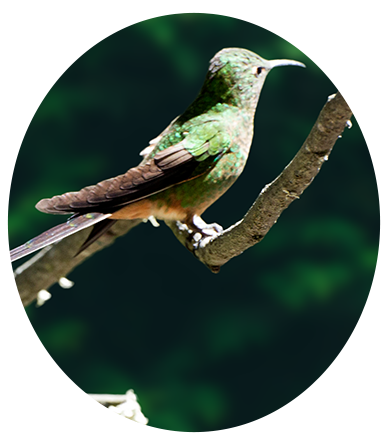

SCIENTIFIC NAME: Lesbia victoriae


The Black-tailed Trainbearer is a small hummingbird species in the family Trochilidae.

Males measure between 8.27 and 9.45 inches long, including the long tail. They are mostly green, with long black tail feathers and an iridescent green patch on the chest and throat.
Females are between 5.31 and 5.71 inches in length.
They differ from the male in having a shorter tail and white underparts with green spots.
The Black-tailed Trainbearer has a longer, more decurved bill and (in males) a longer, more curved tail than the Green-tailed Trainbearer, and also tends to be duller green overall.

It is a nectar generalist, foraging on flowers of various different sizes and species, mostly near the ground.
They complement their diet by consuming small arthropods, in a greater percentage than species occurring at lower altitudes.

Its natural habitats are subtropical or tropical moist montane forest, subtropical or tropical high-altitude shrubland, and heavily degraded former forest.
Prefers semi-open areas instead of closed forest, meaning that it can adapt well to urban ecosystems like parks and gardens.

Widely distributed in central and northern Andes from Colombia through Ecuador to Peru.

Nest is cup-shaped made of dark-colored moss, roots and other plant fibers woven together. It is covered with a thin roof of fern leaves and moss and is built in a shrub, bush or tree.
The female lays 2 small, white eggs which she incubates alone.

SOURCES:
https://en.wikipedia.org
https://www.beautyofbirds.com
https://ebird.org